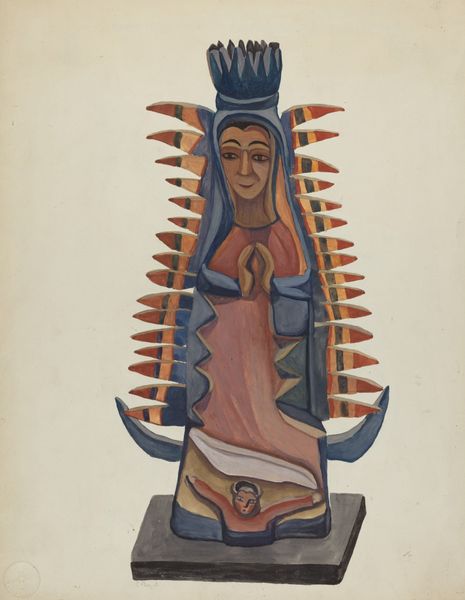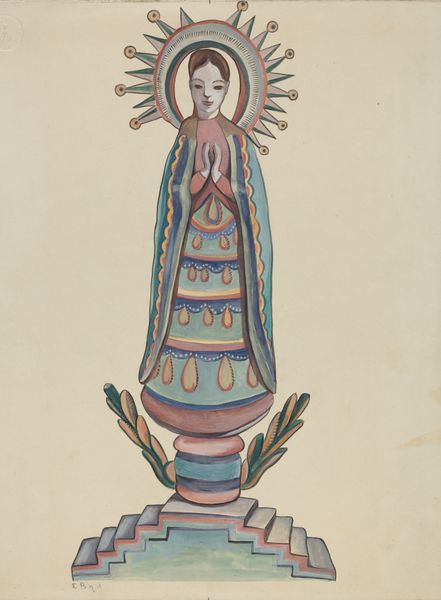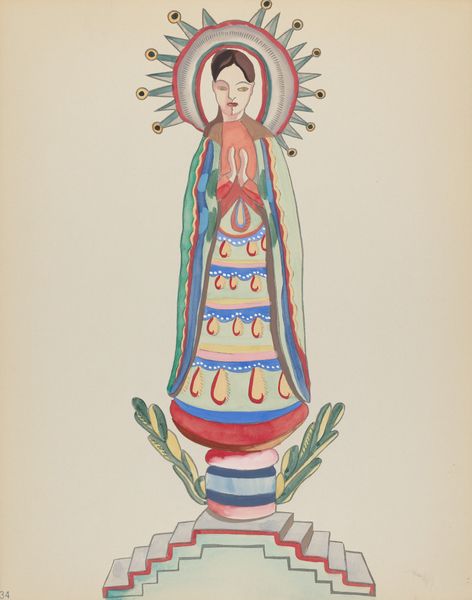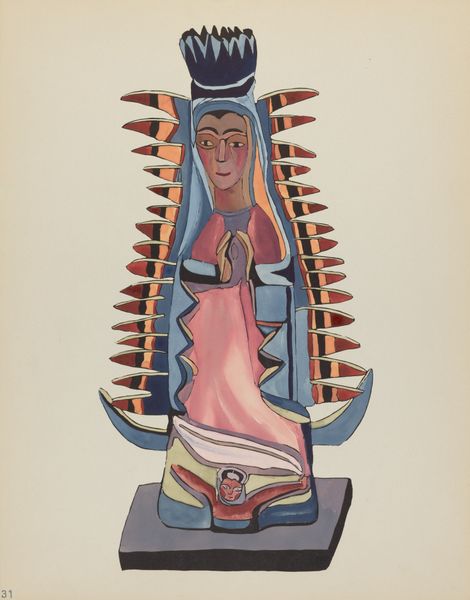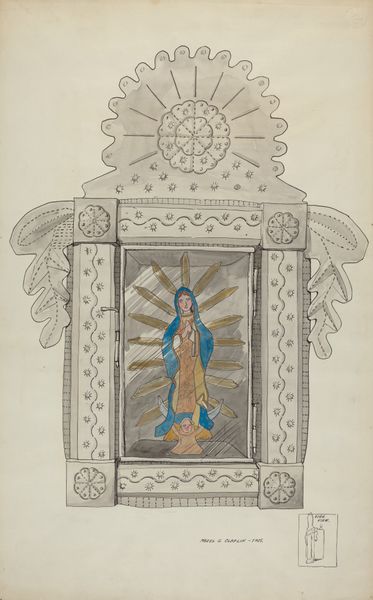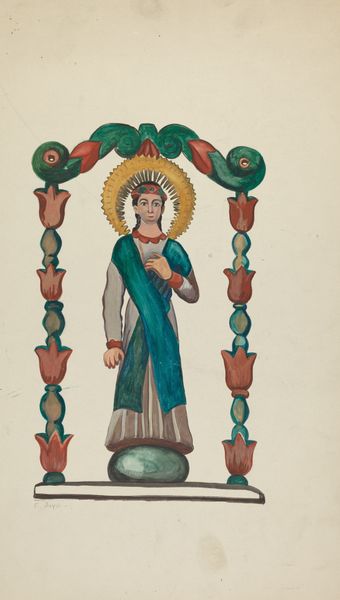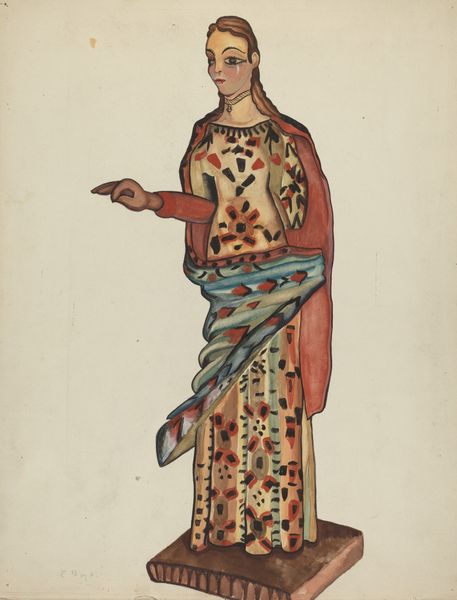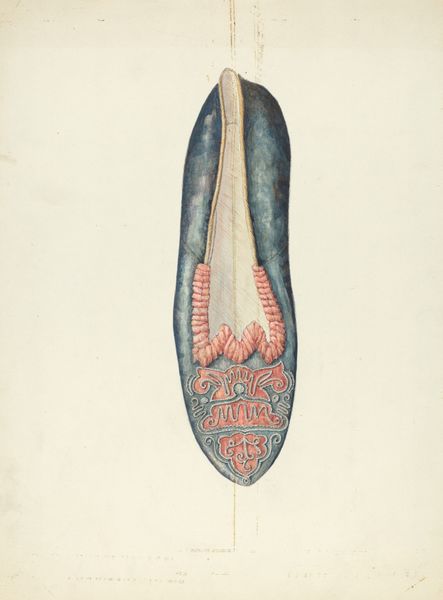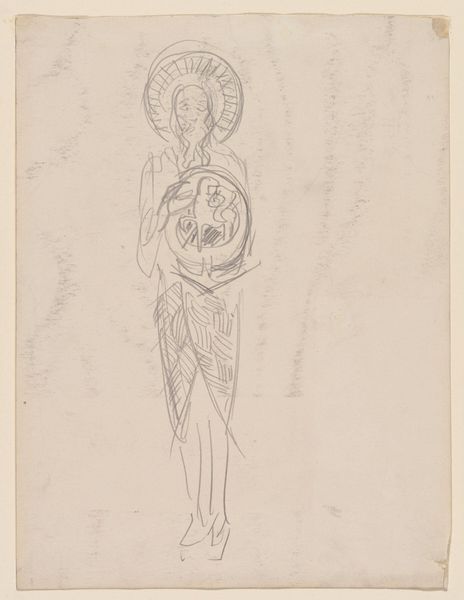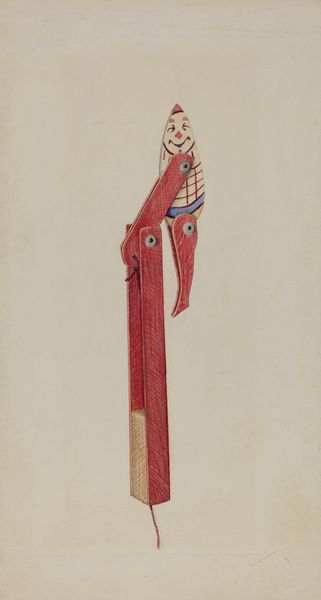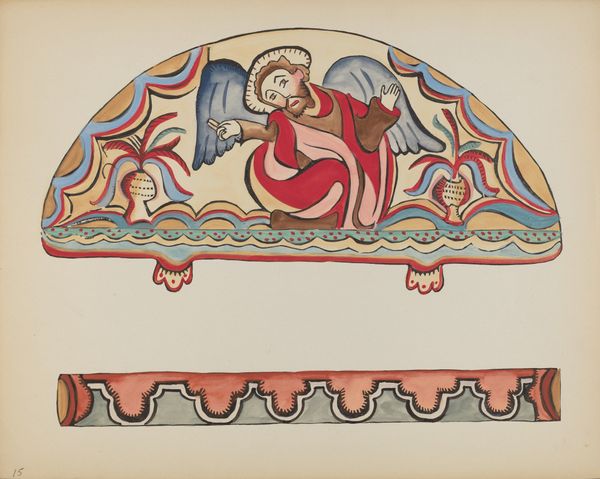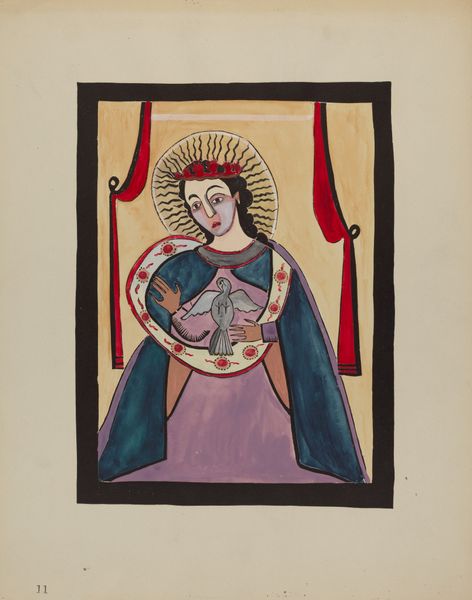
painting
#
painting
#
caricature
#
figuration
#
folk-art
#
watercolour illustration
Dimensions: overall: 36.3 x 28.1 cm (14 5/16 x 11 1/16 in.) Original IAD Object: Approx. 15-16"high
Copyright: National Gallery of Art: CC0 1.0
Curator: The work before us is Majel G. Claflin's rendering of "\"Guadalupe\" Wood Santo or Bulto," dating circa 1937. Claflin has employed watercolor and drawing techniques in its creation. What is your initial impression? Editor: There's an interesting combination of solemnity and naivete. The Virgin has such a melancholic expression. Curator: Claflin’s illustration reflects the prevalent cultural art forms, specifically New Mexican Santos, the wooden carvings made by the early Spanish Colonists to illustrate faith. They represent religious figures, meant to occupy home altars. This piece is very representative of Indigenous Americas’ folk-art style, miniature and colourful. Editor: It seems quite subversive when looking at the power dynamics during this time period, representing the colonial agenda by way of religious icons with a folk, popular representation. Curator: That's an incisive point. I’d only add that the very existence of Bultos served as a tangible connection to faith, especially in remote communities lacking regular access to clergy. So that the access and use of the devotional object helped empower local religious experience. The blue cape dotted with stars is iconographically associated with the Virgin Mary, symbolizing purity. The artist adds rays of lights as visual signs of celestial intervention. Editor: Right. The subject holds power within religious, popular imaginary of salvation and hope that are re-framed through an indigenous and accessible material framework. Its power lies in making sacred power accessible. Also, if we understand “Guadalupe” as the adaptation to the original Virgin representation from Spain, this object performs a double operation, being Spanish and not quite Spanish. Curator: Exactly! Claflin allows us to engage with how cultural representation serves purposes within local communities, as opposed to top-down dissemination. Editor: Indeed. It brings questions of who is producing what for whom, a conversation still extremely relevant. Curator: Considering that this piece has a representational nature, but uses a popular depiction for it. Editor: Overall, the illustration makes visible a unique moment of negotiation around belief, craft, and cultural identity. Thank you for bringing this context into focus.
Comments
No comments
Be the first to comment and join the conversation on the ultimate creative platform.
